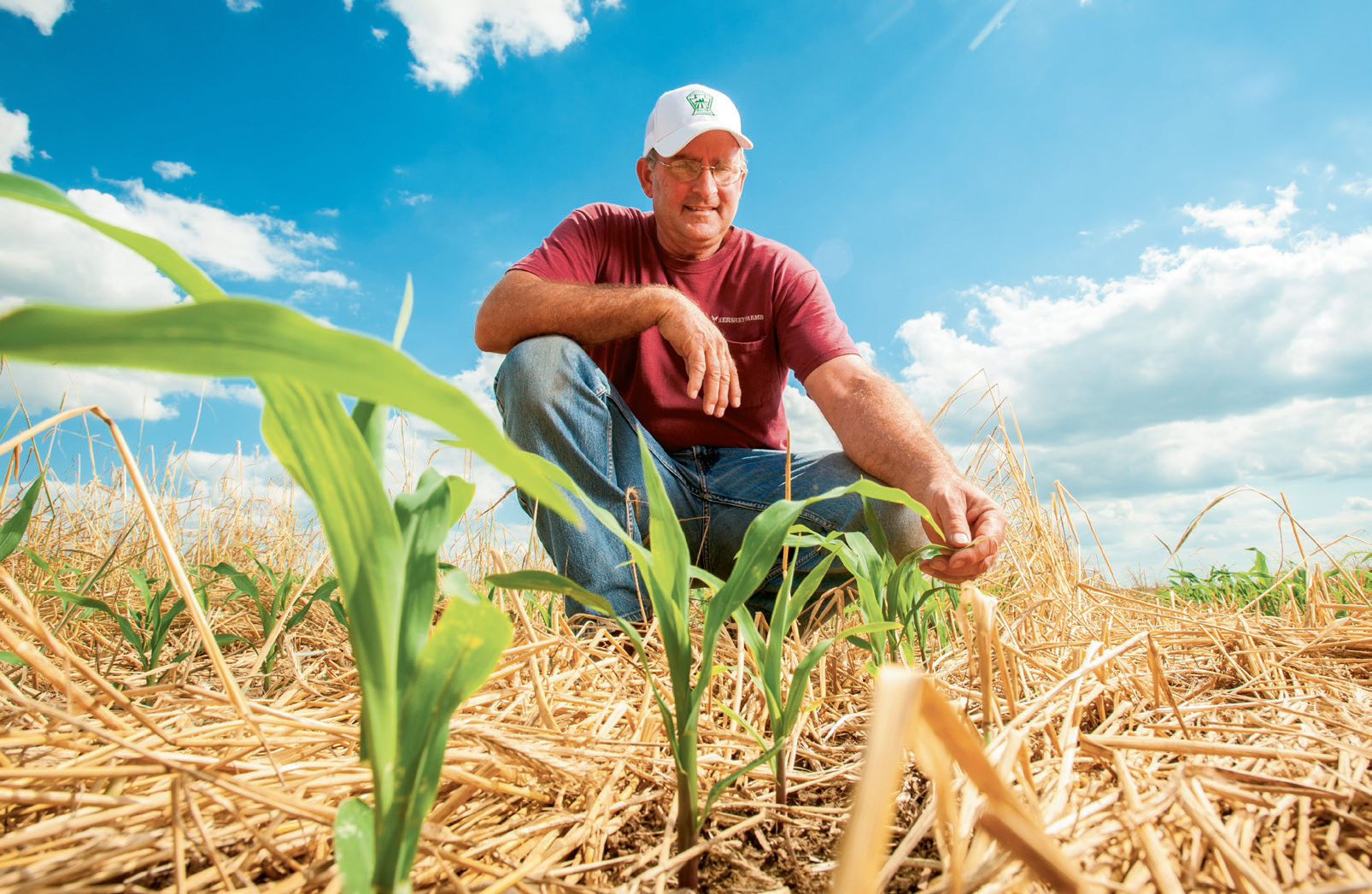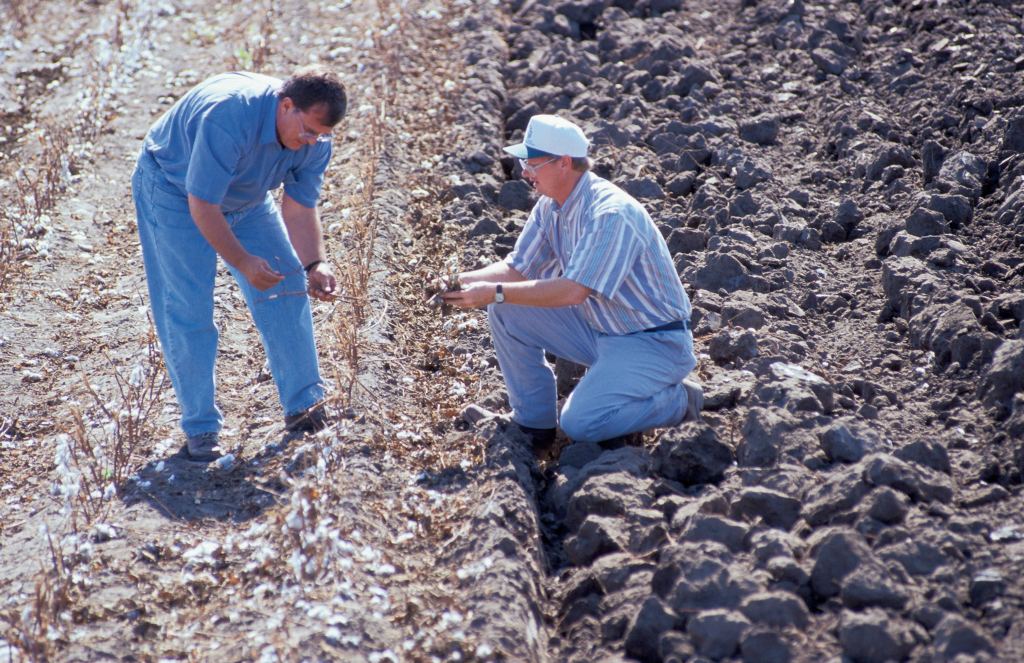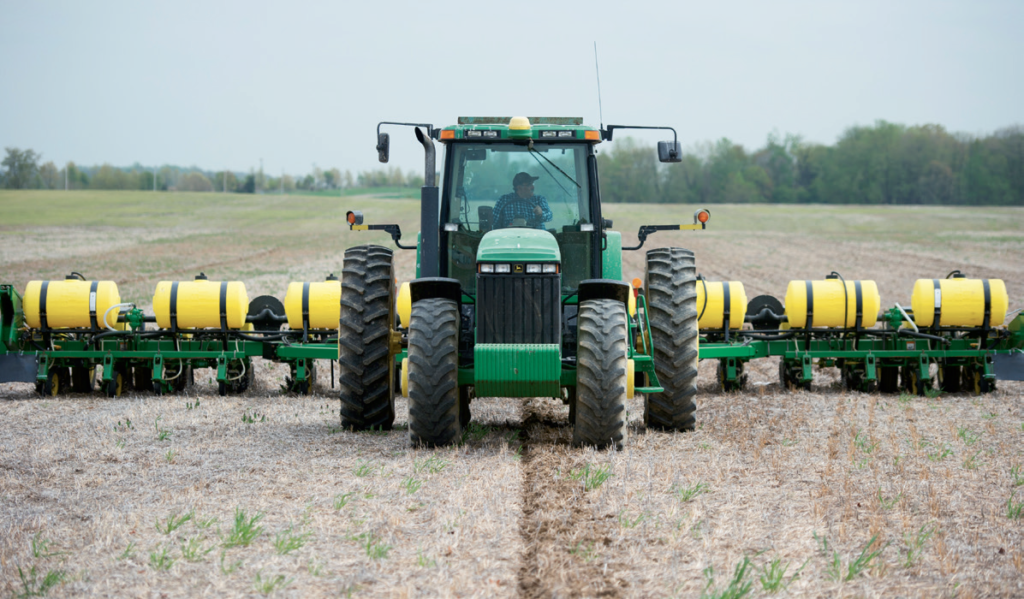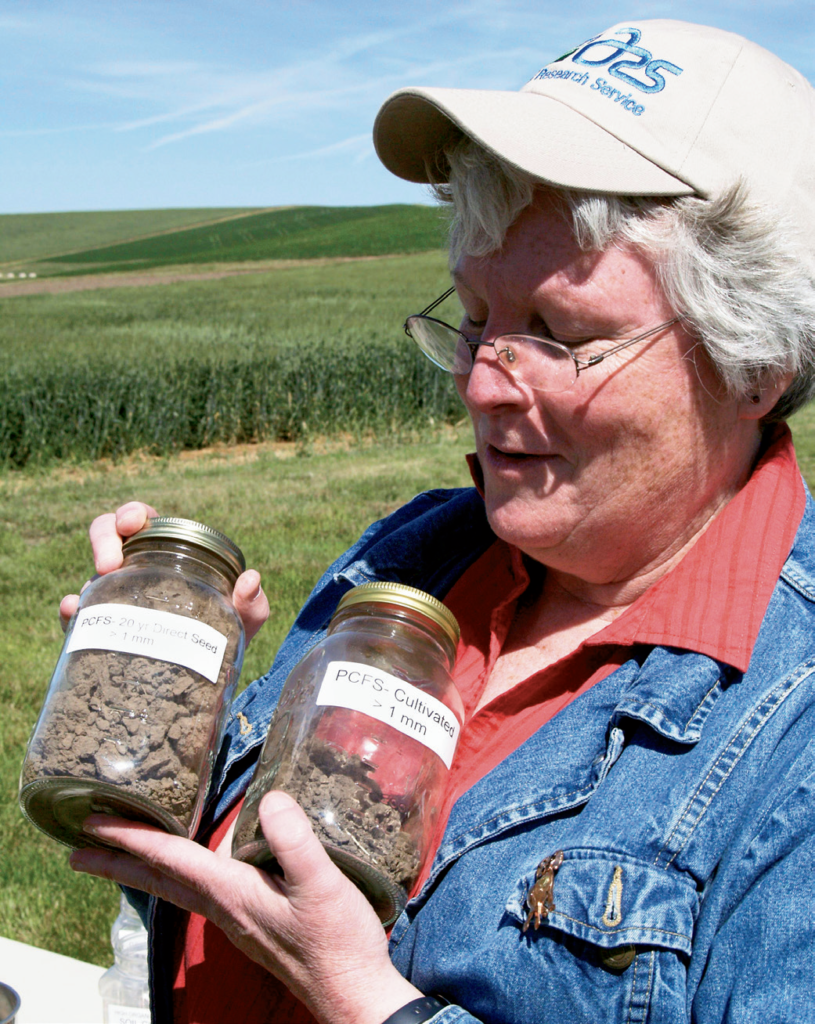
Dec 18, 2020
5 tips to go from no-till-curious to no-till farmer
Reduced erosion. Saved time and fuel. Improved nutrient cycling, soil moisture, and resiliency in the face of drought. You likely already know the potential benefits of no-till.
No-till farmers grow crops with minimal disturbance to their fields and the organisms that call them home. This builds healthier soils while reducing money spent on fuel and labor – a win-win.
With harvest season winding down, you’re no doubt making an important decision for your working land. Will you hook up the plow, or is this the year you’ll park it for good? If you’d like to try no-till, this article is for you.
1. Spread your residue during fall harvest

Bradford is standing. In contrast, conventional tillage exposes the soil to wind and water erosion in the adjoining field where agronomist Jim Smart kneels. Deep tillage also disrupts the activities of beneficial microbes and earthworms and dissipates soil carbon into the atmosphere. Photo: Jack Dykinga/USDA ARS
Plowing isn’t the only way to prepare a field for next spring’s planting.
Evenly distribute residue that will be left in the field while harvesting your cash crop to manage against erosion and allow for a uniform breakdown of nutrients and organic matter. Residue can provide a valuable base of cover for your ground over winter.
2. Don’t forget about cover crops.
Farmers traditionally till to break up soil and prepare seedbeds. Over time, tillage can degrade structure and create highly compacted soils that seemingly “need” to be tilled before spring planting.
Plant cool-season cover crops to reduce compaction, build organic matter, and hold your soil in place. Make sure to pick a cover crop species or mix that complements your cash crop.
If you’re starting with a highly-compacted field, use cover crop species that are meant to break up compaction. Daikon radish is often one great option.
3. Choose equipment with your end-goal in mind.

Simple but critical: Plan before you buy.
Will you plant next year’s cash crop into green cover, terminated cover or fall residue? Will you drill or broadcast your seeds?
Your operation may change over time, but establishing working goals now will keep you from buying equipment you ultimately don’t want.
Some USDA service centers have no-till drills and other equipment you can rent for minimal fees to get started. All offices are staffed with experts who would be happy to talk through your specific management goals.
4. Treat no-till adoption as a marathon, not a sprint. Track results along the way.

Kennedy uses canning jars to illustrate the greater volume of larger sized clumps of soil found in direct-seed soil compared to soil tilled multiple times. These larger sized clumps will not be subject to wind erosion. Photo: Dennis Brown/USDA ARS
Building healthy, resilient soil takes time. Some farmers report yield increases after their first year of no-till, but that shouldn’t be your main goal.
You can quantify several economic benefits of switching to no-till: fuel savings, time savings, eventual fertilizer reductions. By tracking these measures along with changes in yield, you’ll gain a truer sense of the impact of no-till across your operation.
Have your soil tested at least once every four years and conduct your own informal assessments regularly. Healthy soils are full of living organisms.
5. Give us a visit. We’re here to help.
Stop by your local service center to learn more about integrating no-till and other conservation practices into your management plan. We’re here to help you reach conservation goals that support your farm’s production needs.
Farmers across the country have reduced erosion, held valuable nutrients in-field, saved money on fuel and increased their soil’s resiliency by minimizing tillage.
Is this the year you’ll try no-till? If so, having a strong plan in place will help you leave your plow parked for good.
At top: Jim Hershey of Hershey Farms in Elizabethtown, Pennsylvania, with corn plants emerging through cover crop residue. Photo: Edwin Remsberg/SARE






